Size is one of the most important criteria to consider when picking out a pet snake. And I don’t just mean the size of the snake now – I mean it’s adult size.
Many popular pet species start out life small but become unmanageably large upon reaching adulthood. Fortunately, there are a few snake species that make reasonably good pets and stay small for their entire life.
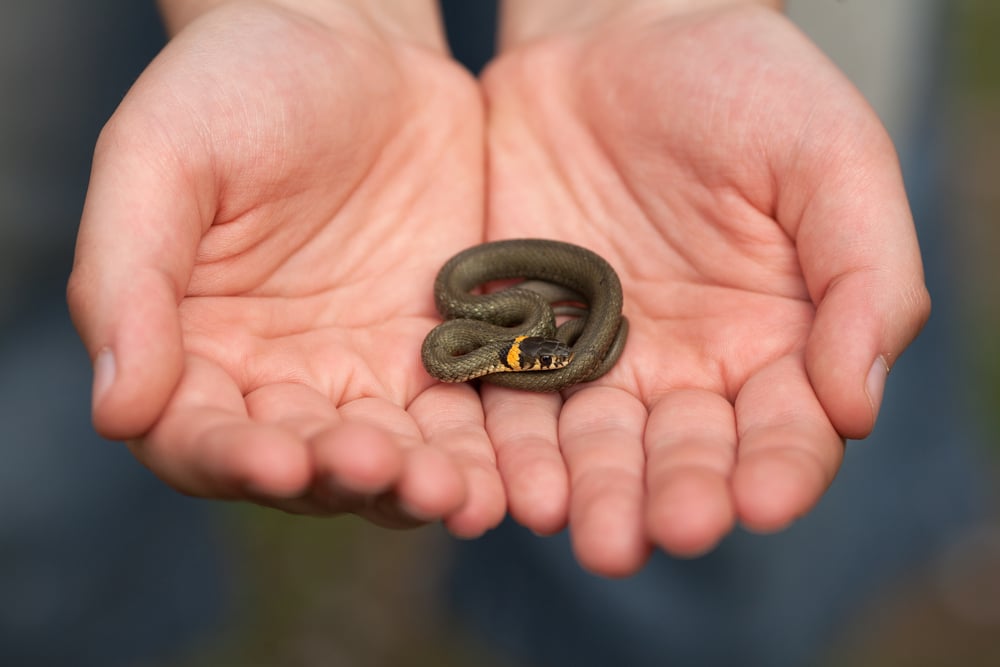
We’ll identify 11 of our favorites below, so you can choose a species that’ll work well in your home.
We’ll discuss some of the reasons small species are often among the best pet snakes, as well as some of the unique challenges small species present. But first, we need to define what we mean by “small.”
Quick Navigation
Working Definitions: How Small Is a Small Snake?
“Small” is obviously a relative term, so we need to identify what that means for our purposes here.
We’re not going to be terribly picky about it, but we will generally mean snakes that are about 3 feet long or shorter.
A few of the species mentioned below may occasionally exceed this length, but most individuals will be this length or shorter.
Just note that snakes vary greatly in terms of width and weight. Some small species are pencil-thin, while others are very thick-bodied.
Very thin species “feel” smaller than their thicker-bodied counterparts, so be sure to consider the girth and length of a given species when making your choice.
Reasons Small Snake Species Are Awesome
There are a variety of reasons small snake species often make very good pets. A few of the most important include:
- Small snakes are easier to house than large species. One of the biggest problems many keepers face is setting aside enough room for their new pet. However, whereas medium or large snakes may require enclosures that provide 8 square feet of space or more, most of the snakes discussed below will thrive in habitats that only provide 2 to 4 square feet of space.
- Small species are less intimidating to novice keepers. Many new keepers are nervous about handling a pet snake, but it is typically less intimidating to handle small species than their larger counterparts.
- Small species usually don’t inflict very painful bites. Most small species are relatively docile (especially those discussed below), but even if a small snake does bite you, it won’t hurt or cause as much damage as a bite from a larger species will.
- Small species are often cheaper to feed than large species. Feeding large snake species can occasionally be an expensive proposition – buying a couple of rabbits every month to feed your reticulated python may become challenging for budget-limited owners. But on the other hand, it isn’t very expensive to feed a small snake a dozen crickets or a handful of worms each week.
Challenges Small Snake Species Present
While small snakes are easier to care for than large species in many ways, they do present a few challenges their larger counterparts do not.
A few of the most notable examples include:
- It can be challenging to acquire suitably small prey. While small prey items are often cheaper than large prey items, it can be challenging to find small prey items at times. For example, if you have a small species that likes to eat slugs, you’ll likely have to collect the slugs yourself as they’re not often available commercially.
- Small snakes are more vulnerable to temperature extremes than larger snakes are. Because they have a higher surface-to-volume ratio than large snakes, small species can become dangerously hot or cold much more quickly. This means you’ll have to pay very close attention to your small snake’s thermal environment.
- Small species are easier to accidentally injure. Even the hardiest small snakes can be very easy to injure through careless handling. In fact, many of the smallest species should primarily be considered “look, but don’t touch” pets, as they’re simply too small to handle easily.
- It is harder to provide veterinary care to small species. Veterinary care for snakes can be challenging for even the largest species, but it is often exceptionally difficult for small species. In some cases, it will essentially be impossible to perform some of the medical techniques necessary to treat a small snake.
11 Snake Snake Species That You Can Keep at Home
Here are 11 types of snakes that stay small and are easy to manage:
1. Brown Snakes (Storeria dekayi)
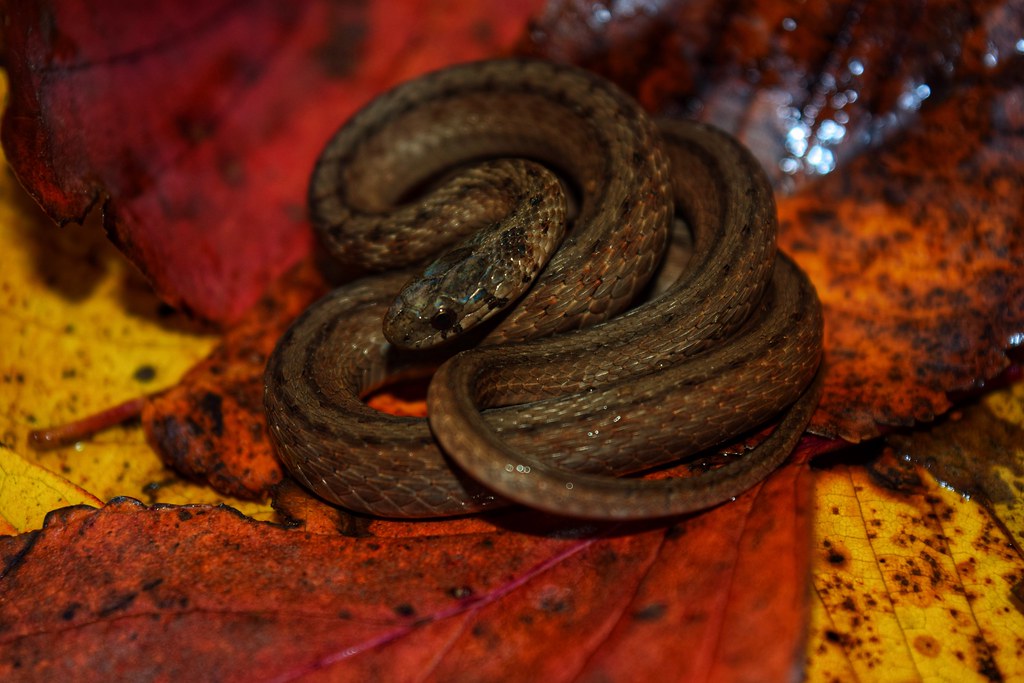
Brown snakes – also called Dekay’s snakes – are very common serpents of forests, swamps, fields, and suburban areas throughout most of the eastern U.S. In many areas, they’re undoubtedly the most common snake species that humans encounter.
Brown snakes reach about 12 inches or so in length, and they’re primarily brown in color. However, they often feature dark or light markings along their backs, which make a vaguely checkerboard-like pattern. Young brown snakes often have a light-colored ring around their necks, but this disappears with age.
The diet of brown snakes is primarily comprised of worms, slugs and other soft-bodied invertebrates. They’re typically inoffensive snakes who aren’t inclined to bite, but it is possible that they have a mild venom. Nevertheless, they’re generally considered harmless to humans.
Brown snakes are secretive animals, so if you decide to keep one as a pet, you’ll need to understand that you won’t see your snake actively prowling around very often. Typically, they spend most of their time lurking under various types of ground cover.
2. Red-Bellied Snakes (Storeria occipitomaculata)

Red-bellied snakes are small, terrestrial serpents who live amid the leaf litter in forests, fields and suburban backyards.
Secretive snakes, these 10-inch-long cuties subsist almost exclusively on slugs in the wild. Slugs aren’t widely available commercially, so that means you’ll have to collect your snake’s food on a regular basis. This probably isn’t reasonable for many keepers, but if you don’t mind hunting around your (pesticide-free) garden for squishy invertebrates, red-bellied snakes can make neat pets.
Red-bellied snakes may have a venom that helps them incapacitate slugs, but they’re harmless to humans. In fact, they rarely even attempt to bite; instead, they perform a weird lip-curling behavior. It isn’t entirely clear what this behavior does, although it is presumably some type of defense mechanism.
Red-bellied snakes aren’t often available commercially, so you’ll likely have to catch your own if you want one as a pet. Just be sure to check your local wildlife laws before doing so.
3. Ringneck Snakes (Diadophis punctatus ssp.)
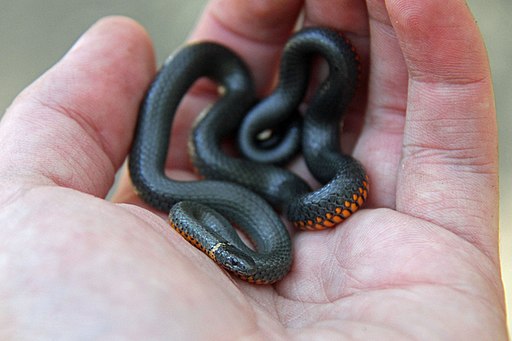
The ringneck snake is another small species that is generally found living under leaf litter, rocks and logs. They inhabit a wide range of habitats across their range, including everything from forests to deserts, and they’re often quite common around human habitation.
Ringneck snakes get their name from the colorful band that is located right behind their heads. They also have brightly colored ventral surfaces, which are usually the same color as the neck ring. When frightened, some ringneck snakes will lift and coil their tails, thereby showing off the bright colors found along their undersurfaces. They may also allow saliva to drip from the corners of their mouths.
There are more than a dozen ringneck subspecies recognized, and they vary in terms of habitat preference, size, and color. None grow especially large; most are about 12 inches long. However, the regal ringneck snake (D. p. regalis) may reach 18 inches or so.
Ringneck snakes do produce a mild venom and have small fangs located at the rear of their mouths. But they are generally considered harmless to humans. Their venom likely helps to incapacitate prey items, which may include worms, salamanders, and small snakes.
Ringneck snakes can make interesting pets for those who’re able to secure a viable (and consistent) food source.
4. Garter Snakes (Thamnophis spp.)
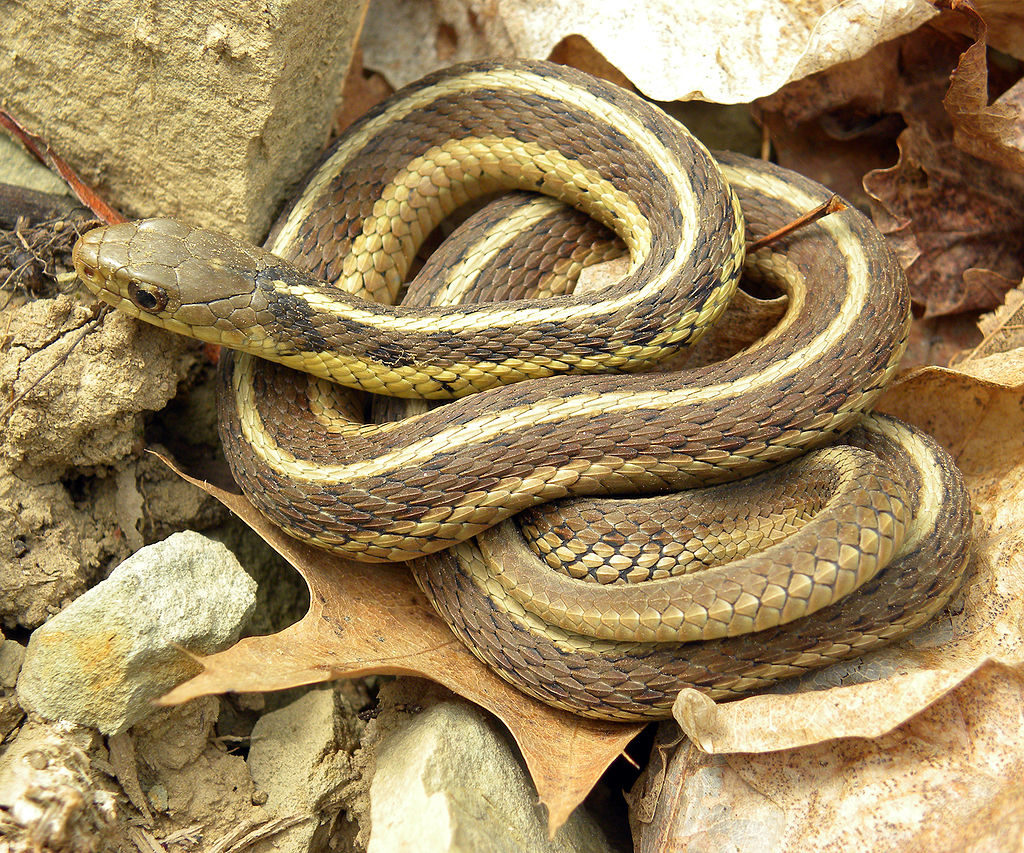
Garter snakes are some of the most familiar snakes in the United States. They’re commonly found in suburban and urban areas, and many breeders even work with garter snakes, which gives keepers the chance to obtain captive-bred individuals. Garter snakes are often undemanding captives, who’re easy to feed, house, and maintain, which only helps increase their popularity even further.
There are about 30 species within the genus Thamnophis, and most are colloquially called garter snakes. A handful of species are instead called ribbon snakes, but they’re all very similar animals, who are clearly close relatives of each other. Each individual species exhibits its own dietary preferences, and some are specialists, who only consume a single type of prey. Others are generalists, who will readily consume frogs, salamanders, fish, worms or other snakes.
They’re named for the lengthwise stripe that is present along the dorsal surface of many (but not all) species, and many also feature attractive and colorful checkerboard patterns. In fact, a few garter snake species are even available in amelanistic (albino) form from breeders, which only increases their appeal.
Garter snakes vary in size from one species to the next, but most reach lengths of about 2 to 3 feet. Rarely, female individuals (who are the larger sex) may exceed 3 feet, and at least one species occasionally reaches 5 feet in length. So, you’ll need to research the specific garter snake species you intend to keep to ensure it will remain within your desired size range.
5. Western Hognose Snakes (Heterodon nasicus)
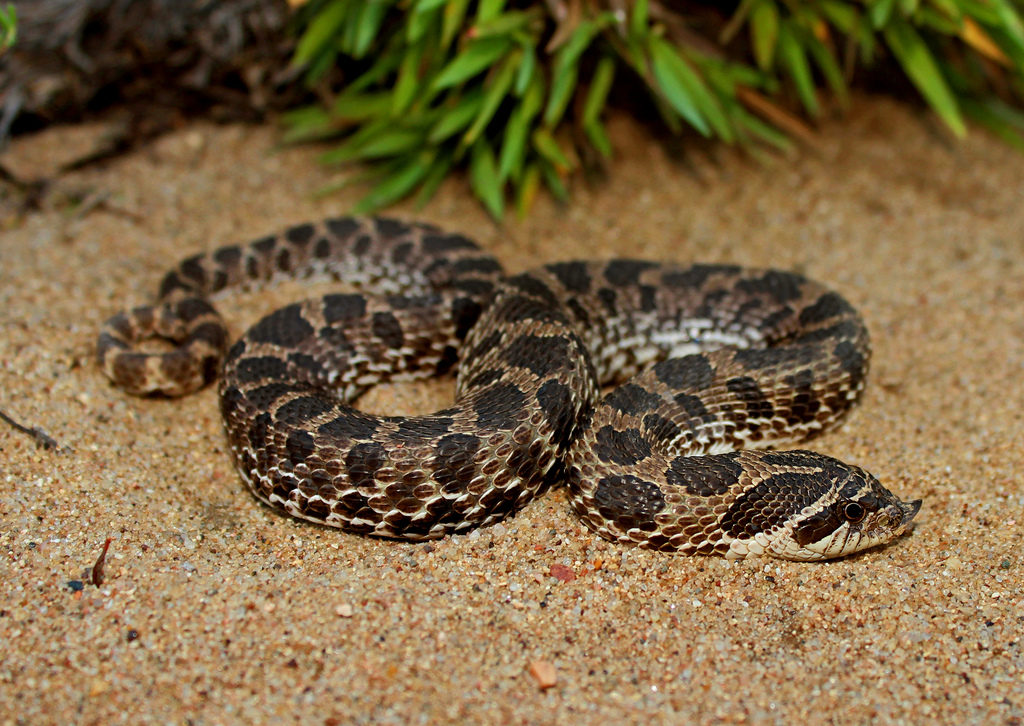
Western hognose snakes are another small species that is quite popular among snake keepers. Unlike many other snakes of similar size (most individuals are about 12 to 18 inches long), hognose snakes are relatively thick snakes, with impressive builds.
These attractive snakes are not only beautiful, but their upturned snouts make them appear somewhat “cute.” They’re also available in a variety of color varieties, which means you can have a hognose snake that looks different from the one your friend keeps.
Hognose snakes are famous for the rich suite of defensive behaviors they often demonstrate when threatened (hissing, head-flattening and playing dead), but the snakes generally stop exhibiting them as they become accustomed to their keeper. Interestingly, hognose snakes very rarely attempt to bite defensively (though bites precipitating from feeding mistakes are relatively common).
Western hognose snakes – like their eastern, southern, and Mexican relatives – possess large fangs in the rear of their mouths. They do produce venom, but it doesn’t usually cause medically significant symptoms for most people. However, sensitive individuals may experience pain, swelling, and similar effects, so caution is still warranted.
Most hognose snakes subsist on toads, but the western forms tend to incorporate more rodents into their diets. Thankfully, most captive bred western hognose snakes will eventually learn to accept rodent prey, which makes feeding them easy.
6. Kenyan Sand Boas (Gongylophis colubrinus)

Kenyan sand boas are thickly built, attractively marked animals with a number of adaptations for their unusual lifestyle.
Kenyan sand boas (like most of their close relatives) spend a lot of time buried under loose substrates. So, they’re largely covered in hard scales that help them slide through the sand. They also have very short tails to help anchor their bodies, and their eyes are located on the tops of their heads, making it easier for them to see while keeping most of their bodies hidden.
Female sand boas grow larger than males, but few individuals reach 3 feet in length. Most captive bred animals are relatively docile and easy to handle, and they are also easy to feed as well. Additionally, you can obtain Kenyan sand boas in a few different color variations.
The biggest downside to these animals is the fact that they spend much of their lives hidden from view. But keepers who don’t mind this will often find Kenyan sand boas to make fantastic pets.
7. Viper Boa (Candoia aspera)
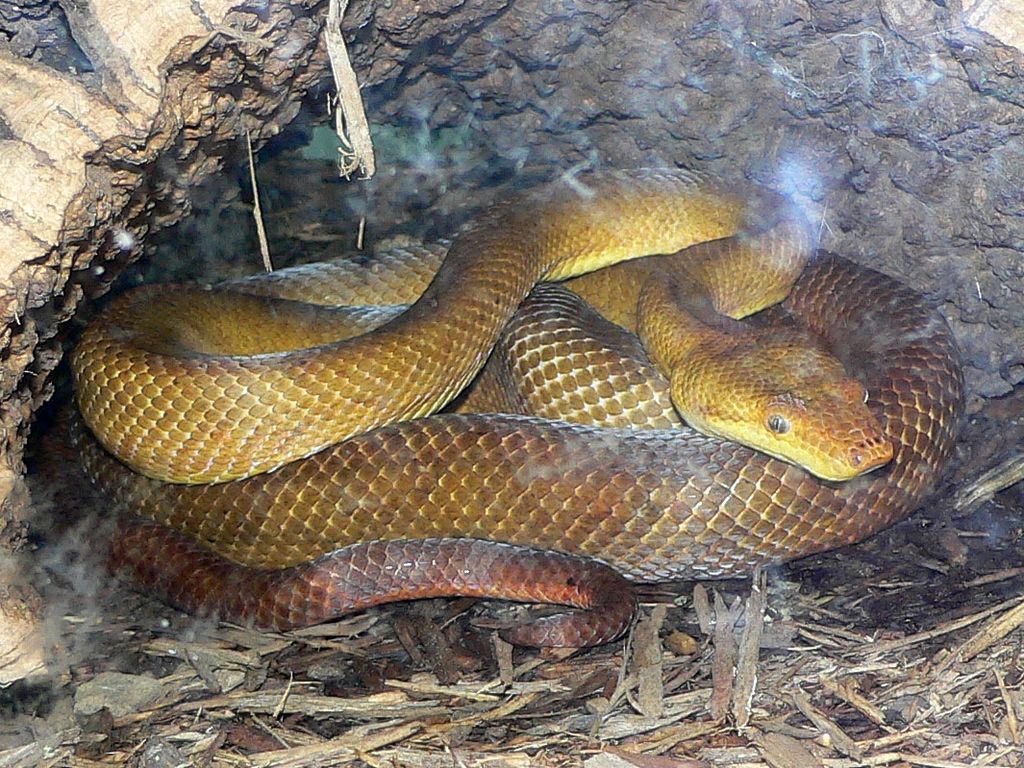
Viper boas are an underappreciated species, but it’s easy to see why they aren’t terribly popular: Those available are usually wild-caught, defensive, parasitized animals, who are very difficult to feed.
However, dedicated keepers who’re willing to endure a lengthy acclimatization process and those who’re able to find captive-bred specimens will surely find them to be interesting, low-key and often beautiful animals.
The very largest individuals occasionally reach 3 feet in length, but most are much shorter. Like many other boas, female viper boas grow much larger than males in this species. It’s also important to note that these snakes are very heavy-bodied. In fact, they’re built like vipers and are thought to be death adder mimics in the wild (death adders are not vipers, but they have viper-like bodies).
Just be sure to do your homework before setting your sites on a viper boa. Many keepers like them (including yours truly), but they aren’t a great fit for most keepers.
8. Rosy Boas (Charina trivirgata)

Rosy boas are very attractive snakes who remain small enough to make great pets for many keepers. They’re also relatively docile and easy to care for, which means that even beginners may enjoy working with this species. Named for the three stripes found along their bodies, these are one of the few boas in the world with lengthwise markings.
Rosy boas are found throughout the southwestern United States and portions of Mexico. They differ a bit in terms of color across this range, with some individuals bearing blueish stripes and others bearing red or orange stripes. Some scientists recognize as many as five subspecies of the rosy boa, but others only recognize three of the subspecies as currently described.
Rosy boas reach about 3 feet in length, with females reaching larger sizes than males. They typically feed readily on rodents and make fairly undemanding captives in most respects. They’re bred with regularity by other keepers, so it isn’t difficult to find captive bred offspring. In fact, oddly colored variations – many of which are quite beautiful — are readily available.
9. Children’s Pythons (Antaresia childreni)
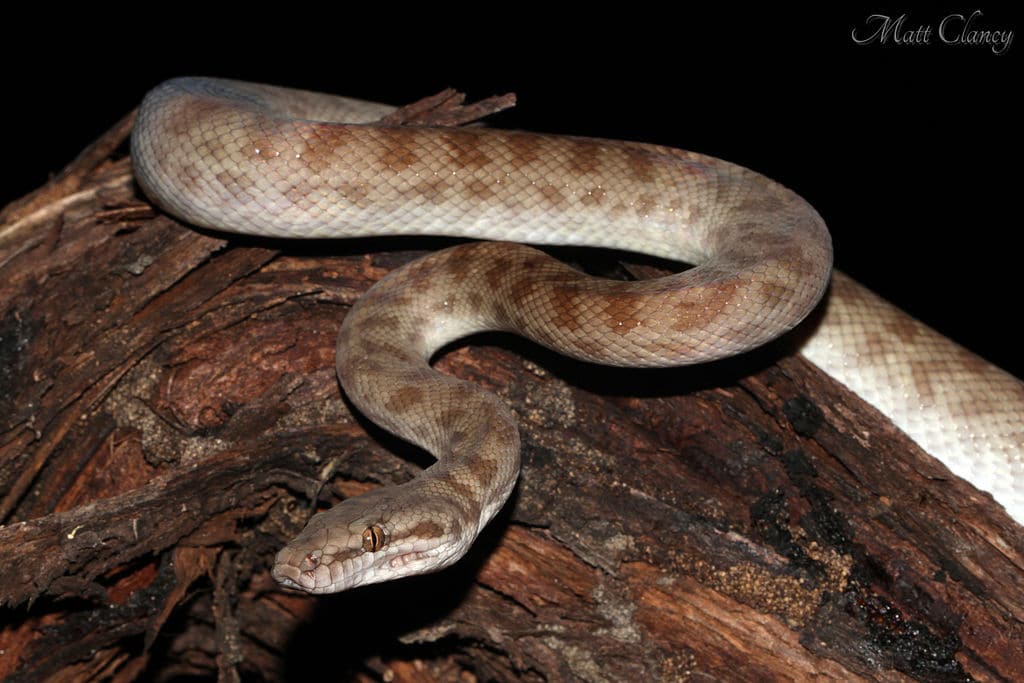
Children’s pythons are one of the smallest python species in the world, and most individuals reach lengths of about 3 feet or so. However, large females may reach nearly 5 feet in some cases, so if size is an important consideration, you’ll want to select a male individual. Nevertheless, children’s pythons are fairly lithe snakes, so even 5-foot-long animals still “feel” small.
Children’s pythons probably subsist on lizards in the wild, but captive individuals will usually accept mice readily. Young hatchlings, however, may present problems in this regard, so beginners are wise to stick to well-established animals, who are at least a few months old.
Children’s pythons are attractive animals, who’re not only clad in reddish blotches, but their skin reflects the light in a very striking manner. They certainly don’t rival rainbow boas (Epicrates cenchria) or white-lipped pythons (Bothrochilus albertisii) in terms of iridescence, but they’re very beautiful animals.
Unfortunately, children’s pythons aren’t as readily available as some other snake species, but they can be found with a bit of searching around.
10. Green Snakes (Opheodrys spp.)
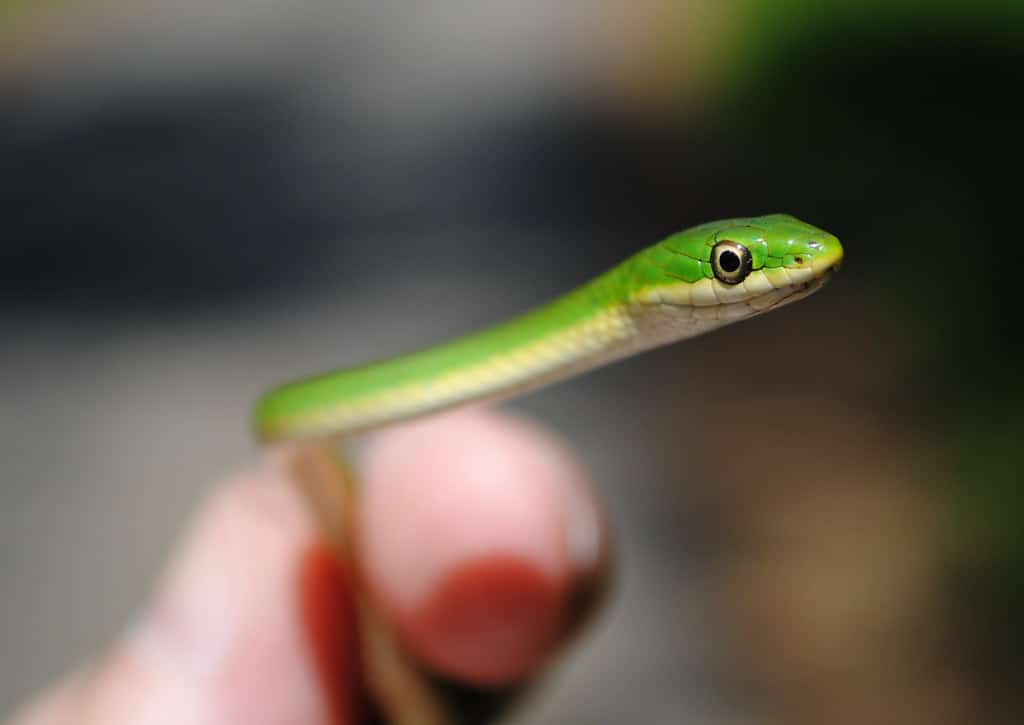
There are two species of green snake, both of which are native to the United States. They differ in several important ways, but they’re both close relatives, who have roughly similar husbandry requirements.
Rough green snakes (O. aestivus) are the larger of the two. They may occasionally exceed 3.5 feet in length, but they’re so thin (most are smaller in diameter than a pencil), we still feel comfortable classifying them as a “small” snake species. Smooth green snakes (O. vernalis) are the smaller of the two, and typically reach about 16 to 20 inches in length.
Both species subsist almost entirely on invertebrates, but they may occasionally consume small lizards too. Both green snake species are very attractive animals, who use their vibrant green coloration to help camouflage them from predators. They will climb shrubs in search of prey (although the rough green snake is the more likely to climb of the two), and they often like to live in close proximity to water.
Note that green snakes do not handle stress well, so these are not good animals for keepers who want to handle their pets. Additionally, they’re not often available as captive bred offspring, so it is important to do all that you can to keep them relaxed and comfortable in their enclosure.
11. Rubber Boas (Charina bottae)
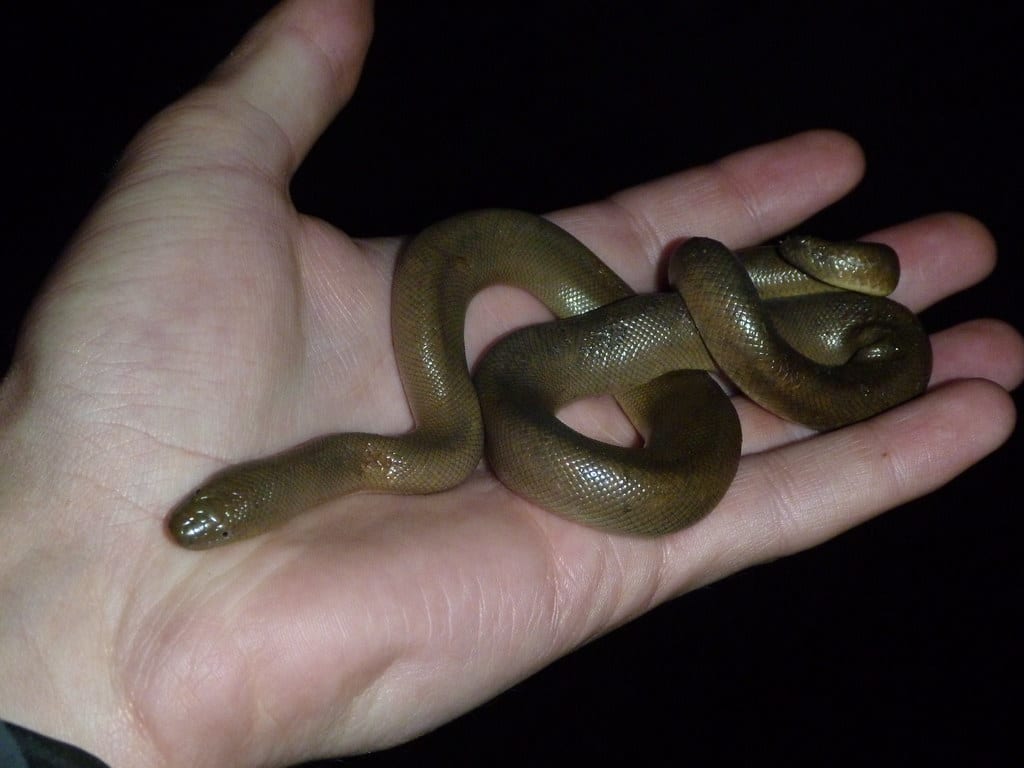
The rubber boa is relatively rare in captivity, but these underappreciated snakes can make good pets.
One of only two boa species found in the United States (with the other being the previously discussed rosy boa), rubber boas are also the most northerly boa species found in the world. The natural range of the rubber boa stretches from British Columbia, Canada, to the Los Angeles area of California, and they’re found as far west as Montana.
Rubber boas have indistinct heads and very blunt tails, so they’re pretty easy to recognize at a glance. They lack the intricate markings many other boa species exhibit, and instead are largely green dorsally with yellow ventral surfaces. Their eyes are relatively small and bear elliptical pupils like most other boas.
The largest individuals may slightly exceed 3 feet in length, but most are significantly smaller. Rubber boas are typically very calm and docile snakes, who may curl up in a ball when frightened. Rubber boas typically feed on rodent prey, and they can make interesting captives, although they are often secretive.
Conclusion
Many keepers – especially novices – are interested in selecting a small species for their next pet. And for the reasons discussed earlier, small species can make excellent pets. Just be sure that you’re willing to work around some of the challenges small species present before taking the plunge.
With a bit of research, hard work and patience, you’ll likely find that small snake species can make interesting and rewarding pets.